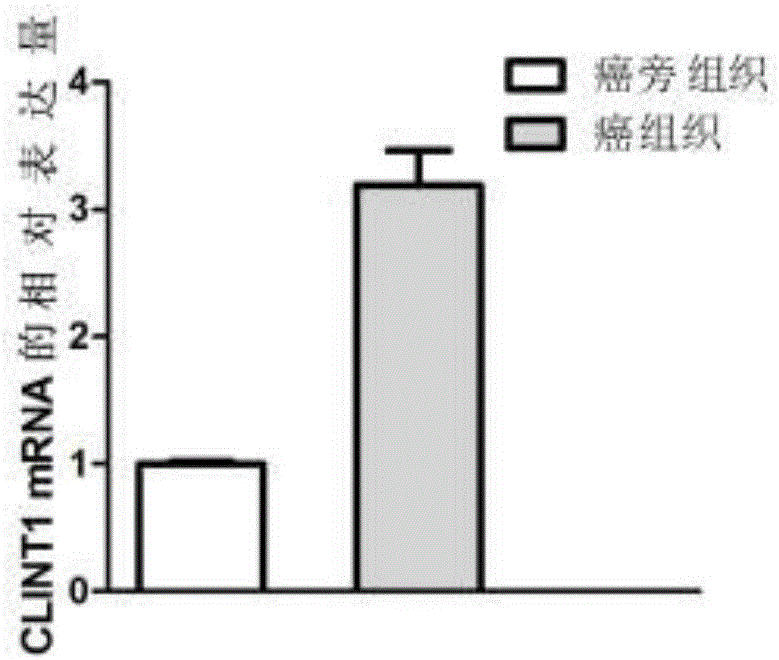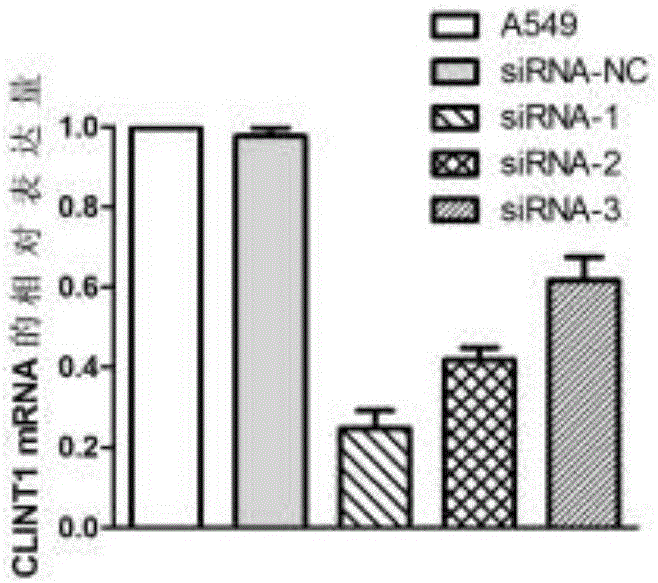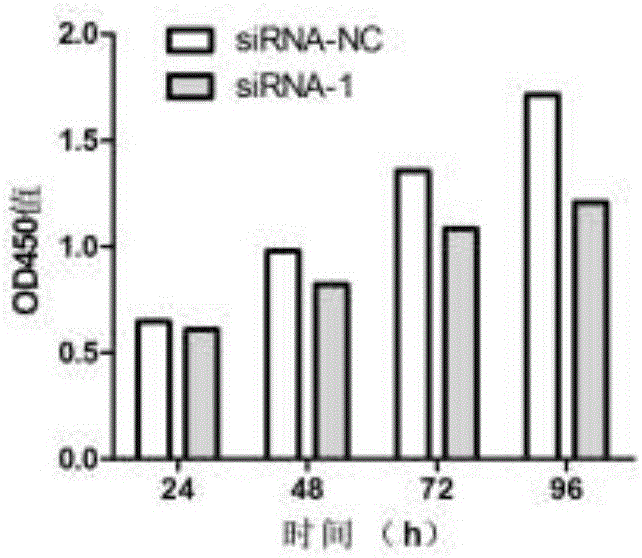Application of biomarker as target to diagnosis and treatment of lung adenocarcinoma
A kind of lung adenocarcinoma, application technology, applied in the field of biomedicine
- Summary
- Abstract
- Description
- Claims
- Application Information
AI Technical Summary
Problems solved by technology
Method used
Image
Examples
Embodiment 1
[0079] Example 1 Screening for Gene Markers Related to Lung Adenocarcinoma
[0080] 1. Sample collection
[0081] Paracancerous tissue and lung adenocarcinoma tissue samples were collected from 8 cases of lung adenocarcinoma. The tumor tissue specimens of lung adenocarcinoma were collected from the main tumor area, which was located at the junction of the middle and outer 1 / 3 of the tumor mass and normal tissue, and the obvious necrosis and calcification in the tumor center and normal lung tissue around the tumor were excluded; the normal lung tissue specimens adjacent to cancer were obtained from tumor There is no obvious change in the part above 5cm from the edge. All the above specimens were obtained with the consent of the organizational ethics committee.
[0082] 2. RNA sample preparation (using E.Z.N.A. miRNA kit for operation)
[0083] Introduce liquid nitrogen into the mortar, take the tissue obtained above and put it into the mortar, cut it into pieces in liquid ...
Embodiment 2
[0105] Example 2 QPCR sequencing to verify the differential expression of the CLINT1 gene
[0106] 1. Large-sample QPCR verification of differential expression of CLINT1 gene. According to the sample collection method in Example 1, 50 cases of lung adenocarcinoma paracancerous tissues and 50 cases of lung adenocarcinoma tissues were selected.
[0107] 2. The RNA extraction steps are as described in Example 1.
[0108] 3. Reverse transcription
[0109] 1) Reaction system:
[0110] RNA template 1 μl, random primer 1 μl, double distilled water was added to 12 μl, mixed, centrifuged at low speed, 65 ° C for 5 min, and then cooled on ice.
[0111] Continue to add the following components to the 12 μl reaction solution:
[0112] 5× reaction buffer 4μl, RNase inhibitor (20U / μl) 1μl, 10mM dNTP mixture 2μl, AMV reverse transcriptase (200U / μl) 1μl; mix well and centrifuge;
[0113] 2) Reverse transcription reaction conditions
[0114] 5 minutes at 25°C, 60 minutes at 42°C, and 5 m...
Embodiment 3
[0131] Silence of embodiment 3CLINT1 gene
[0132] 1. Cell culture
[0133] Human lung adenocarcinoma cell line A549 was incubated in RPMI1640 medium containing 10% fetal bovine serum and 1% P / S at 37°C, 5% CO 2 , Cultivated in an incubator with a relative humidity of 90%. Change the medium once every 2-3 days, and use 0.25% EDTA-containing trypsin for routine digestion and passage.
[0134] The cells in the culture flask were digested with trypsin and seeded in a 6-well plate to ensure that the number of cells was 2-8×10 5 cells / well, add cell culture medium. Overnight, observe the cell density the next day, and transfection can be performed when the cell density is above 70%.
[0135] 2. Design of siRNA
[0136] Negative control siRNA sequence (siRNA-NC):
[0137] The sense strand is 5'-UUCUCCGAACGUGUCACGU-3' (SEQ ID NO.7)
[0138] The antisense strand is 5'-ACGUGACACGUUCGGAGAA-3' (SEQ ID NO.8)
[0139] siRNA-1:
[0140] The sense strand is 5'-UUAUCACUGAAUGGAAAAGCA-...
PUM
 Login to View More
Login to View More Abstract
Description
Claims
Application Information
 Login to View More
Login to View More - R&D
- Intellectual Property
- Life Sciences
- Materials
- Tech Scout
- Unparalleled Data Quality
- Higher Quality Content
- 60% Fewer Hallucinations
Browse by: Latest US Patents, China's latest patents, Technical Efficacy Thesaurus, Application Domain, Technology Topic, Popular Technical Reports.
© 2025 PatSnap. All rights reserved.Legal|Privacy policy|Modern Slavery Act Transparency Statement|Sitemap|About US| Contact US: help@patsnap.com



